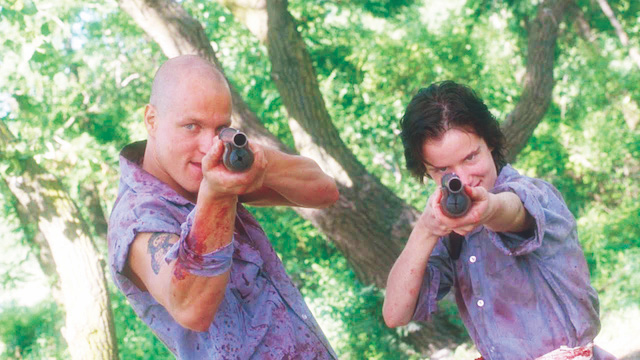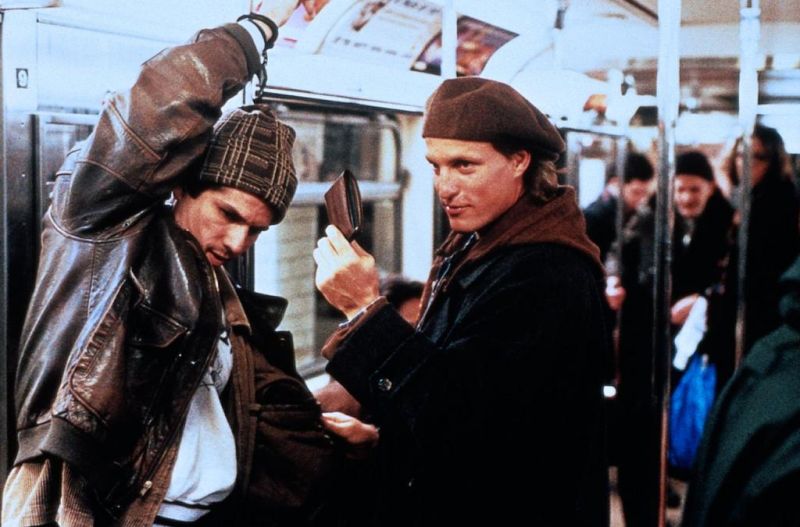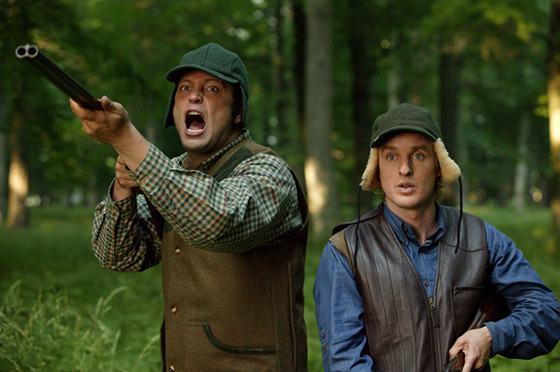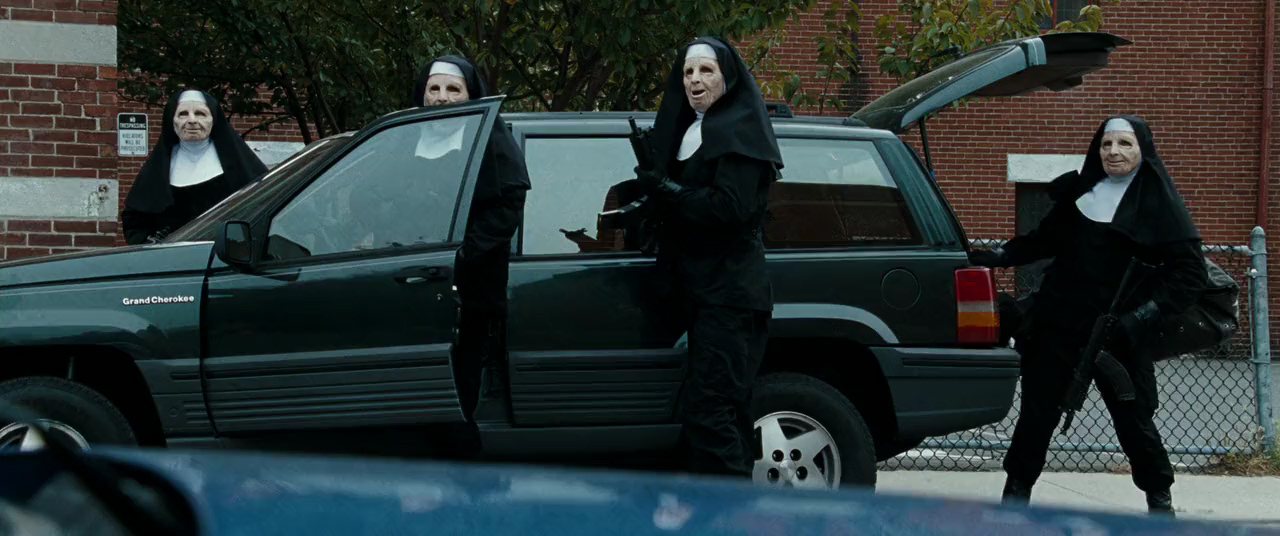6. Natural Born Killers (1994)

So many people have cited Oliver Stone’s hyper-violent, hyper-controversial satire as a catalyst for their misdeeds that Natural Born Killers is one of the few movies – perhaps even the ONLY one – that has a Wikipedia page dedicated solely to the copycat crimes it purportedly inspired.
A few of the more noteworthy incidents include Sarah Edmondson and Benjamin Darras murdering William Savage and permanently paralyzing Patsy Byers in a multistate crime spree after watching the film in 1995; the 1996 Frontier Middle School shooting in Moses Lake, Washington, in which 14-year-old Barry Loukaitis (who rented the movie at least seven times and quoted it religiously) gunned down two fellow students and severely wounded several others; and 23-year-old Jeremy Allan Steinke murdering the mother, father and 8-year-old brother of his 12-year-old girlfriend in Alberta, Canada a day after watching the film in 2006.
The film has also been cited as a favorite of – but not necessarily a direct influence on – several notorious school shooters, including Columbine perpetrators Eric Harris and Dylan Klebold, Heath High School shooter Michael Carneal and Dawson College killer Kimveer Gill.
7. Money Train (1995)

The largely forgettable Wesley Snipes action vehicle is most noteworthy today for allegedly inspiring a string of armed robberies bearing an uncanny resemblance to a heist sequence in the movie.
Shortly after the film was released, no less than SEVEN subway robberies were attempted in New York alone, with each attack following the same modus operandi of the movie; crooks would douse a token booth in gasoline and threaten to set it ablaze unless the clerk inside forked over the cash.
At least one man – 50-year-old Harvey Kaufmann – was killed in the attacks, setting off a fiery debate on movie violence that even seeped into the 1996 Presidential Election.
“The American people have a right to voice their outrage, and they can do so not through calls for government censorship, but by derailing the ‘Money Train’ at the box office,” stated Republican nominee Bob Dole, who encouraged fellow G.O.P. sympathizers to join him in a national boycott of the film.
8. The Matrix (1999)

The Wachowskis’ decade-defining techno-action flick was apparently just as big a hit with paranoid sociopaths as it was the general moviegoing masses of the late 1990s.
At least three people have attempted to blame the film for their murderous behavior, each of them claiming they were literally living inside the titular computer world at the time of their crimes.
Californian Vadim Mieseges used the “defense” after killing his landlord in 2002, as did Ohioan Tonda Ansley, who also killed her landlord the same year. In 2003, Virginian Joshua Cooke killed both his parents and later told authorities that since it happened in the simulated cyber-world of The Matrix, he shouldn’t be arrested. The film has also been linked to Beltway Sniper Lee Boyd Malvo, due to his bizarre prison writings constantly referencing the movie.
9. Wedding Crashers (2005)

There’s a scene in the 2005 comedy in which Owen Wilson and Vince Vaughn squirt a couple of drops of Visine in a dude’s drink, which – in the film, at least – caused the unwitting victim to experience explosive diarrhea. Alas, in real life consuming such eye drop chemicals can cause serious injuries, as quite a few pranksters inspired by Wedding Crashers soon realized. One high schooler in Milwaukee almost died in 2006 after five peers laced their classmate’s drink with the potent solution.
In 2009 Missourian Tonia Peterson was charged with first degree assault after drugging her husband’s tea. Pennsylvanian Vickie Jo Mills was given a two-to-four-year prison sentence after repeatedly drugging her boyfriend with the eye drop medications in 2013 – the same year Californian Shayne Carpenter was arrested for pulling the “prank” on his girlfriend after a spat.
Most recently, in 2015 a New Jersey high schooler was booked on aggravated assault charges after he spiked his teacher’s drink with Visine. And in all of the abovementioned incidents, the perpetrators made it very clear where they got the idea, as each of the “pranksters” listed Wedding Crashers as their direct inspiration.
10. The Town (2010)

Ben Affleck’s bank robbing caper has been cited as an influence by numerous would-be heisters – some of whom even wore the exact same get-up as the characters in the movie during their real world crimes.
Three men in Atlanta who robbed a jewelry store in 2011 – momentarily getting away with more than $60,000 in goods – later told the police they got the bright idea after watching The Town. The very same year, two robbers held up a bank in Chicago while wearing nun masks, just like the antagonists (protagonists?) of Affleck’s film.
The film was actually screened in court during the trial of several men arrested for robbing a bank in 2012 – all of whom wore rubber masks, bleached the crime scene and threatened witnesses during the crime a’ la the gang of heisters in the 2010 film. And yet another group of robbers – whose M.O., not unlike the robbers in the movie, included cutting off the electricity at their stops – were suspected of committing more than 60 heist jobs over the course of just one year in New York.
Naturally, that The Town – itself a work of fiction based on a fictitious book based on real mob violence in the 1960s and 1970s – inspired such criminal acts begs the question: is it technically an example of life-imitating-art, or is it more accurate to describe it as a work of life-imitating-art-imitating-art-imitating-life?
Author Bio: James Swift (@UNJournalism) is an Atlanta-based writer and reporter whose work has been published by the Juvenile Justice Information Exchange, Youth Today, the Center for Public Integrity, the Marietta Daily Journal, AOL, Thought Catalog, The Roswell and Alpharetta Neighbor, The North Fulton Business Journal and the Journal of Blacks in Higher Education. His multimedia project “Rural America: After the Recession” received acclaim from both the Community Action Partnership and the Casey Journalism Center on Children and Families, and in 2013, he wrote the foreword for Jan Banning’s “Down and Out in the South.”